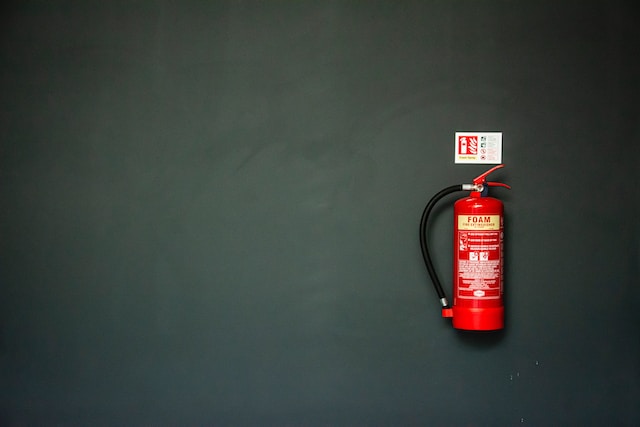Rather than install a fire extinguisher, or put on some other safety measures, most would say God forbid.
Is it wise to wish it away or rather be More Prepared, whenever such incident happens?
Do you have a fire extinguisher in your house, office or car?
If you have one, did you get the right one and how familiar are you with it?
Classification of Fire Extinguishers And The Different Types of Fire They Handle.
Classes of fire Extinguisher, different classifications exist, according to the type of fire at hand. They include the following.
- Water
- Foam
- Wet Chemical
- Carbon Dioxide
- Dry Chemical
Where They can be used include the following.
Fire Class A
- Wood
- Paper
- Textiles
- Rubbish etc
Fire Class A-B
- Wood
- Paper
- Textiles
- Rubbish etc.
- Flammable Liquids
Class A: Fires involving carbonaceous solids, such as wood, cloth, paper, rubber and plastics.
Does not include flammable metals (see Class D).
Class B: Fires involving flammable and combustible liquids.
Class C: Fires involving combustible gases.
Class D: Fires involving certain combustible metals, including potassium, sodium and magnesium.
Specialist advice should be sought.
Class E: Fires involving energized electrical equipment.
Class F: Fires involving cooking oils and fats.
A fire will burn as long as there is oxygen, fuel and heat available. Removal of any one of these elements will extinguish the fire. Interrupting the chemical chain reaction of the fire will also extinguish the fire.
Starving The Fire
Remove the fuel – i.e. the un-burnt material. This can include turning off the gas in the event of a Class C fire.
Smothering The Fire
Prevent oxygen from combining with the fuel. This is how a fire blanket works.
Cooling The Fire
Reduce the temperature of the burning material to below its ignition point. This happens when you put water on a Class A fire.
Interrupting The Chemical Chain Reaction
Some fire extinguishers (e.g. a dry chemical powder extinguisher) interrupt the chain reaction and smother the fire at the same time.
The first line of defense during the early stages of a fire is a fire extinguisher. Only someone who is comfortable and physically able to operate the extinguisher should use it on a small fire (no bigger than a waste paper basket).
Consider letting the public know where to get extinguishers as part of “cooking safety.”
When putting out a fire, you should:
- Whenever possible, seek assistance and have a friend or family member dial and call the Fire Service closest to you.
2. Make sure that everyone else has left the house and use the appropriate technique or fire extinguisher to put out the fire, especially if burning fat or electricity are involved.
The Best Instrument for Putting out the fire include:-
- Using a fire blanket is the most effective and safest technique to put out a contained cooking fire, such as a fat fire in a skillet. If you know how to use it (preferably wet) or it can even increase the scale of the fire.
- To handle the many sorts of house fires, there are numerous fire extinguishers on the market. It is important to keep in mind that there is no one fire extinguisher or extinguishing technique that can put out all types of fires.

Other Tips Includes
B:E Dry chemical powder extinguisher
Since cooking fires are the most frequent types of home fires. For this extinguisher,
B:E. Cooking oils and fats, Electrical fires, And fires involving flammable liquids Can all be put out using this sort of extinguisher (Class B, E & F fires). On the other hand, it is not advised for flames containing wood, textiles, paper, or garbage (Class A fires).
Class A flames should be put out with water from a yard hose or kitchen faucet.
The use of an A:B:C dry powder extinguisher in a household setting is also acceptable.
B:E as a minimum if you choose this kind of extinguisher.
This type of fire extinguisher is appropriate for Class A flames—those containing wood, textiles, paper, or trash
Class B fires, and Class E fires—those involving flammable liquids. Nevertheless, it has limited efficacy on Class A fires involving cooking oils and fats (Class F fires). To effectively put out contained oil or fat fires in your kitchen if you only install an A:B:C extinguisher, you must also have a fire blanket.
What Size or Quantity should you have at home.
For residential house use, a one kilogram (1 kg) dry powder extinguisher is advised. The fire is too big if a 1 kg extinguisher cannot put it out. Everyone needs to leave the house, and you should call for HELP and Dial the Fire Service Department.
Where Should the Extinguisher be placed?
Most house fires start in the kitchen. To secure an escape path in the event that you are unable to put out the fire, the fire extinguisher and fire blanket should be mounted near the kitchen’s entrance or exit.
The extinguisher should be installed close to an exit in a vehicle, or boat so that you can readily access it and deploy it without risking your safety from the fire. You should always be able to retreat from a situation.
Maintenance How often should you maintain the fire Extinguisher?
The Dry powder extinguisher should be taken out of its mounting bracket at least once every six months:
- Check to see if the powder has not compacted by giving it a gentle shake.
Make sure there is enough gas propellant for the extinguisher to function by checking that the pressure gauge is in the green zone. - See whether there is any other obvious damage. If you’re worried, replace the extinguisher. When the extinguisher reaches the age of ten years, either replace it or have it serviced and pressure tested.
Examine your yacht for saltwater corrosion. - For all other fire extinguisher types, perform a visual examination every six months, check the pressure gauge, follow all other manufacturer-recommended maintenance procedures, and have the extinguisher tested or replaced every ten years.
Be Skilled In The Usage Of The Fire Extinguisher
Every time you inspect the fire extinguisher, familiarize yourself with the directions on it. You shouldn’t read the extinguisher instructions during an emergency.
Read Also



1 Comment
Thanks for this heads-up ✅✅